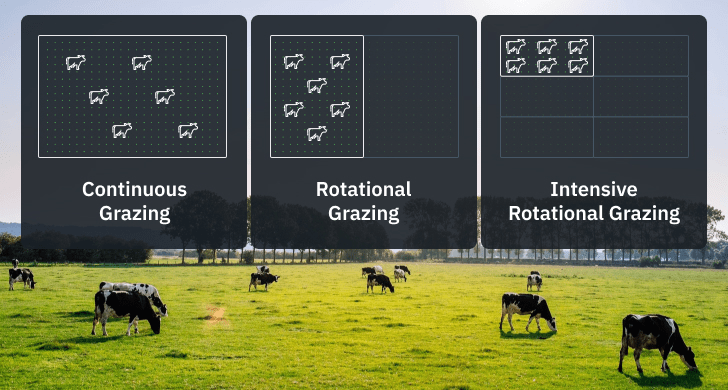Subsistence farmers with very few resources and low farm outputs dominate agriculture. Although improved and successful pasture productions are established only in some research institutes, universities, and other private farms, the majority of farmers utilize pastures from natural rangelands.
Rearing animals on pastures helps to reduce the cost of production since farmers pay nothing before they utilize the abundant pasture resources.
Pastures are the backbone of the livestock industry because of their significant role in sustaining the livestock sector and economy.
Advantages and constraints to successful pasture production in agriculture are the benefits and challenges that farmers face when growing and managing pastures for their grazing animals.
Understanding these can help farmers make informed decisions to ensure the best possible outcomes for their farming operations.
Advantages of Pastures in Agriculture
Pastures have the following advantages in farming systems:
They help to provide feed for livestock, especially during the rainy season period;
They help to protect and conserve the soil thereby preventing damage;
They are used as part of rotation systems such as ley pastures;
They are used for site stabilization in dams, under bridges and in lawns, etc;
They serve as sources of income for many countries citizens through sales of conserved forage;
They are used in recreational centers such as stadia, polo grounds, open spaces, etc;
They serve as sources of vitamins e.g. vitamins A and B which are needed for healthy living;
Products from pasture-finished livestock are higher in omega-3 and conjugated linoleic acids which help to decrease blood cholesterol level and decreases cancer risks;
They serve as a source of employment, especially in the area of forage conservation and marketing.
Nutritious Food for Animals: Pastures provide a natural and nutritious food source for grazing animals, ensuring they receive a balanced diet that supports their growth and overall health.
Improved Soil Health: Pastures can contribute to improved soil health by preventing erosion, increasing organic matter, and enhancing soil fertility, leading to better crop yields and long-term sustainability.
Cost-Efficiency: Pastures are often more cost-effective compared to purchasing commercial feed, helping farmers reduce their expenses and improve their overall profitability.
Biodiversity and Ecosystem Balance: Well-managed pastures can support a diverse range of plant and animal life, contributing to a balanced and healthy ecosystem on the farm.
Read Also: Definition and Establishment of Permanent Pastures
Constraints to Successful Pasture Production Agriculture
Although pasture production offers numerous advantages to the economy, there are some challenges facing the sector, which militates against its success from the 1950s to date. These constraints include:
Climatic factors in some parts of the world do not favor the production of some exotic pasture species, especially in Sahelian areas of the country;
The presence of dense forests especially in southern parts of the world hinders successful pasture establishment;
Lack of awareness by farmers about the importance of pasture production especially during dry season periods;
Lack of interest in pasture production by the majority of farmers due to easy access to our natural rangelands;
Lack of good management of our natural rangelands;
Traditional beliefs by farmers affect the success of pasture establishment;
Inadequate lands due to high human population and competition with crops;
Use of unproductive lands for pasture production by farmers rather than fertile soils;
Lack of knowledge about pastures and their production procedures.
Weed Competition: Weeds can compete with pasture plants for nutrients, sunlight, and water, reducing overall pasture productivity and quality.
Pest and Disease Management: Pastures can be susceptible to pests and diseases, requiring careful management and sometimes the use of pesticides or other control measures to maintain healthy pasture growth.
Seasonal Changes and Climate Variability: Changes in weather and seasonal patterns can impact pasture growth, affecting the availability of grazing for animals and requiring farmers to adapt their management practices accordingly.
Overgrazing and Soil Degradation: Improper grazing management can lead to overgrazing, causing soil compaction, reduced pasture productivity, and overall degradation of the land.
Read Also: Types of Pastures Based on Duration
Relationship between Pastures and Other Ecosystem Components

In the grassland ecosystem, there are some existing relationships between various components of the system. These relationships help to maintain balance in the system, thereby providing livestock with nutritious feed. The components affected are:
- Soil
- Plants/Pasture Species
- Animals
- Man
- Climate
In summary, pastures are necessary for successful livestock production. However, there are some production constraints that affect pasture production. There are some relationships between the ecosystem components in grasslands.
Understanding these advantages and constraints can help farmers implement effective strategies to maximize the benefits of pasture production while mitigating potential challenges.
By carefully managing their pastures, farmers can ensure the sustainable and efficient production of high-quality forage for their grazing animals.
Read Also: Definition and Management of Native Pastures
Read Also: How Waste Papers, Metals, Woods, Glasses, and Plastics are Recycled
